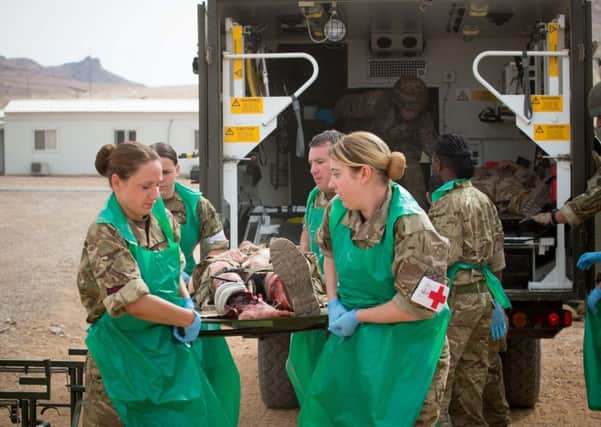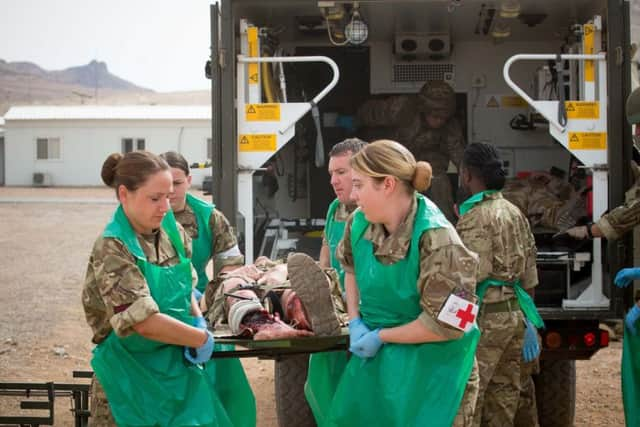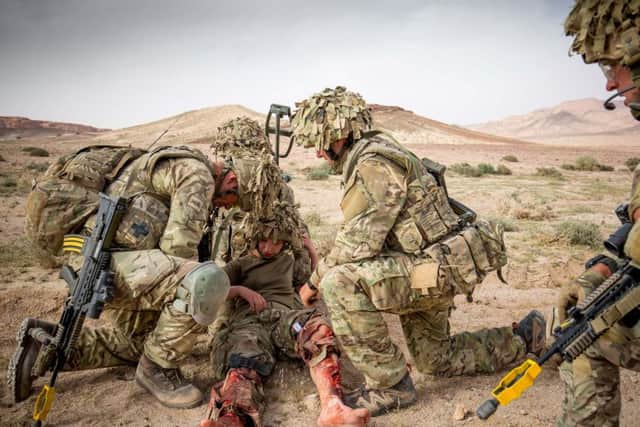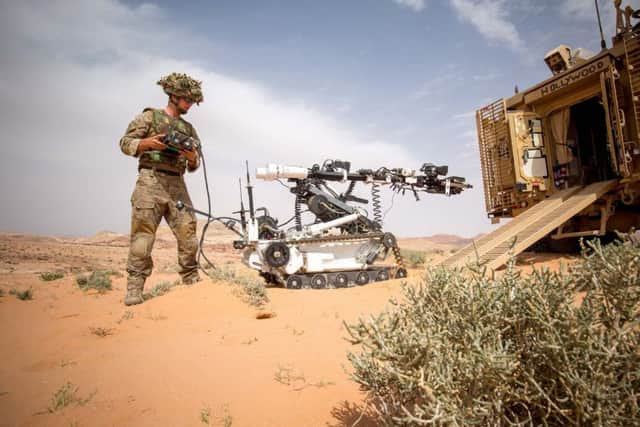Meet the medics providing top care - in a desert


But thankfully for those soldiers arriving on stretchers and camped up in tented wards, their injuries are not real, and the set up outside the port of Aqaba is part of an elaborate training exercise, designed to test both the soldiers - and the medical personnel, to the very limits.
The military staff from 34 Field Hospital, based at Strensall near York, are part of a 1,400 strong team spending six weeks in the desert to test if the Army could still deploy a fighting force of up to 30,000 troops to anywhere in the world.
Advertisement
Hide AdAdvertisement
Hide AdAnd the facilities developed in Yorkshire are at the forefront of the logistical war game.


For the first time, it has unveiled a new rapid reaction field hospital that can be flown anywhere in the world and then be put up to start operating on battlefield casualties in only 16 hours - seen as a must in the post-Afghanistan military climate.
The entire hospital fits in the back of two RAF C17 transporter planes and provides the same level of care as an NHS trauma centre.
Being at the forefront of military medical development is nothing new for the staff of the Army Medical Services training facilities in North Yorkshire, who developed methods for treating Ebola in their sterile air hangar in 2014 before flying out to Africa to help with the crisis.
Advertisement
Hide AdAdvertisement
Hide AdBack in Jordan, the world class facility has everything you would expect from a major trauma centre - including an ambulance, X-ray machine, intensive care ward, operating theatre, blood storage fridge, blood analysis equipment and generators.


The series of tented wards with operating theatre has the capability to treat eight badly wounded soldiers and easily expand if needed.
Casualties can be operated on and stabilised in the emergency unit before being flown back to Britain.
Lt Col Paul Reynolds, commander of 34 Field Hospital, said: “If you had a road accident in the UK and went to a UK-based trauma centre, you would get no better care there than you would here.
Advertisement
Hide AdAdvertisement
Hide Ad“I can then take this down in a day, move it wherever I am told to move it, and re-establish again in that 16 hours.”


During the exercise, the 100-strong team managed to beat the 16 hour set-up target, getting fully operational in just over 11 hours.
Even the surgeons would help put up the tents before each unit split into their departments to set up their own equipment.
Col Reynolds added: “After Afghanistan, the medical services are back in the mindset of being able to deploy at short notice, anywhere in the world, and be ready to deliver first class care in that short space of time.”
Advertisement
Hide AdAdvertisement
Hide AdFlight Lieutenant Tracey Molyneux, who is part of the defence medical team, said: “My job here is to be head of department for the wards and my job back at home is head of department for a medical ward, so those roles are very similar - there isn’t much difference.
“The biggest thing for us is moving all the kit out here, getting used to the terrain and the heat, looking after the troops in the hot weather and building our own hospital.”